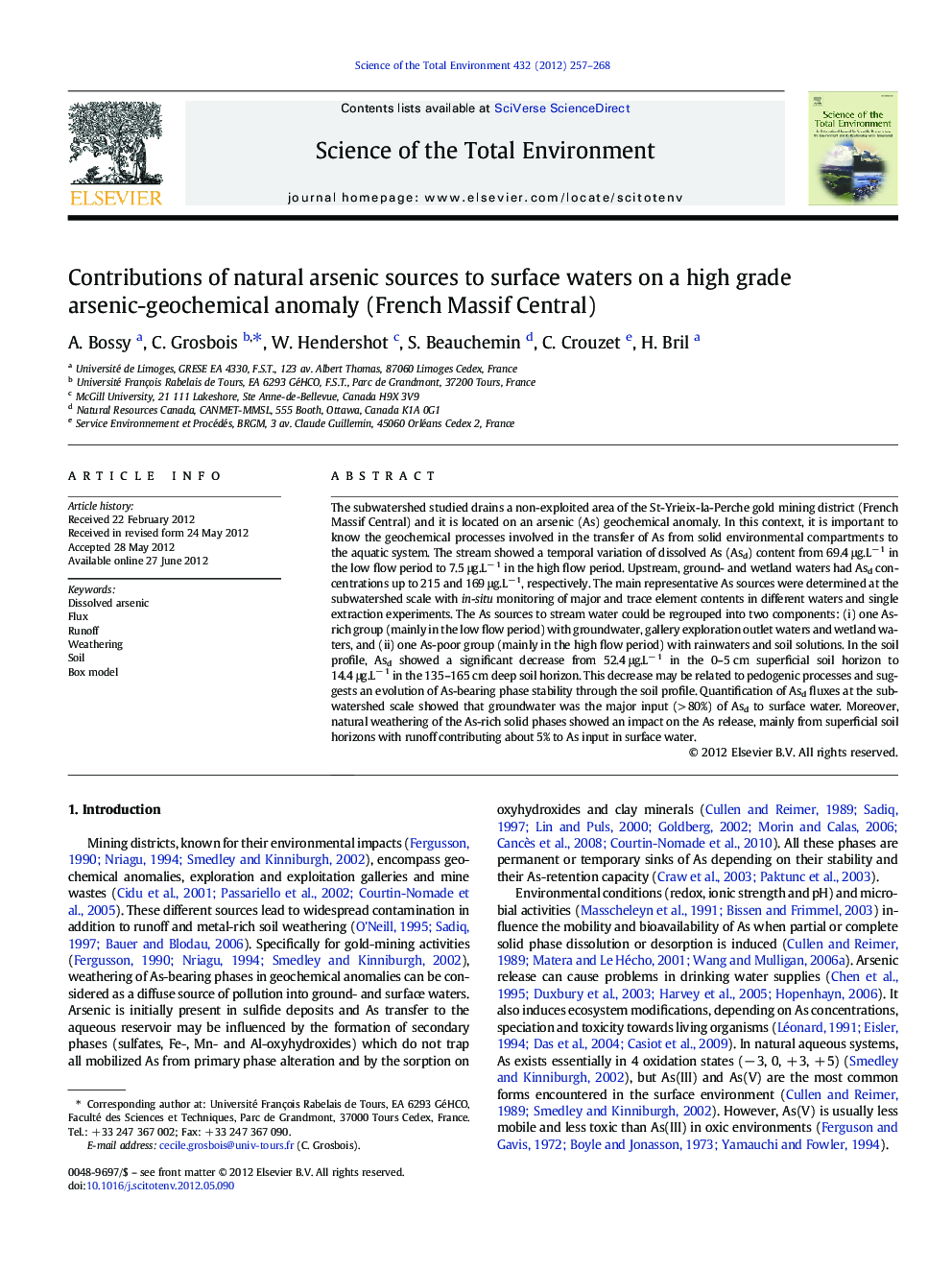| کد مقاله | کد نشریه | سال انتشار | مقاله انگلیسی | نسخه تمام متن |
|---|---|---|---|---|
| 6334156 | 1619820 | 2012 | 12 صفحه PDF | دانلود رایگان |

The subwatershed studied drains a non-exploited area of the St-Yrieix-la-Perche gold mining district (French Massif Central) and it is located on an arsenic (As) geochemical anomaly. In this context, it is important to know the geochemical processes involved in the transfer of As from solid environmental compartments to the aquatic system. The stream showed a temporal variation of dissolved As (Asd) content from 69.4 μg.Lâ 1 in the low flow period to 7.5 μg.Lâ 1 in the high flow period. Upstream, ground- and wetland waters had Asd concentrations up to 215 and 169 μg.Lâ 1, respectively. The main representative As sources were determined at the subwatershed scale with in-situ monitoring of major and trace element contents in different waters and single extraction experiments. The As sources to stream water could be regrouped into two components: (i) one As-rich group (mainly in the low flow period) with groundwater, gallery exploration outlet waters and wetland waters, and (ii) one As-poor group (mainly in the high flow period) with rainwaters and soil solutions. In the soil profile, Asd showed a significant decrease from 52.4 μg.Lâ 1 in the 0-5 cm superficial soil horizon to 14.4 μg.Lâ 1 in the 135-165 cm deep soil horizon. This decrease may be related to pedogenic processes and suggests an evolution of As-bearing phase stability through the soil profile. Quantification of Asd fluxes at the subwatershed scale showed that groundwater was the major input (> 80%) of Asd to surface water. Moreover, natural weathering of the As-rich solid phases showed an impact on the As release, mainly from superficial soil horizons with runoff contributing about 5% to As input in surface water.
âºNatural As sources were runoff, groundwater inputs, soil and sediment weathering. âºMajor inputs of As to surface waters come from groundwaters and runoff. âºDissolved As concentrations in surface waters were higher during the low flow period. âºArsenic flux during the high flow represents 66% of the total annual flux.
Journal: Science of The Total Environment - Volume 432, 15 August 2012, Pages 257-268